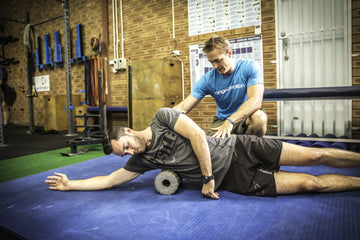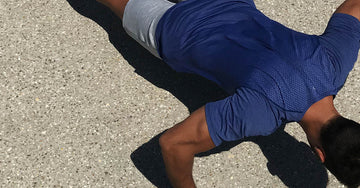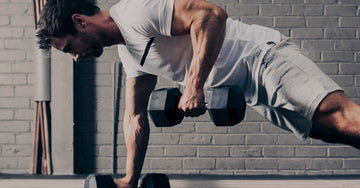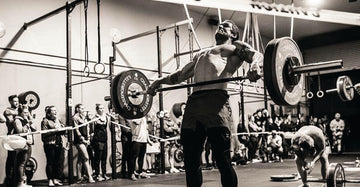Roll Playing - Reviewing the Effectiveness of Foam Rolling

- Self administered myofascial release increases joint range of motion, though only when adhered to in the long term.
- Self administered myofascial release should be used in conjunction with other treatment types for maximal effect (eg. stretching).
- Self administered myofascial release both before exercise (to prepare the body) and after exercise (to promote recovery) causes improvements in performance, namely power, agility, strength, speed, dynamic strength-endurance, muscle force and muscle activation.
- Self administered myofascial release reduces muscle soreness, highlighting it as an important tool not only for athletes, but also beginner exercisers where excessive soreness may become a barrier to exercise.
We explore the findings here:
The explosion of performance based fitness has brought with it the popularisation of recovery. Foam rollers and trigger point balls are no longer confined to yoga and pilates studios, or to the consult rooms of physiotherapists. It’s now more unusual to find a gym without these tools than it is to find one with.
With this popularisation, these tools have become toys. They’re no longer in the hands of professionals, but in the glutes of amateurs. By reviewing the literature, we can bridge the gap between access to these devices, and the knowledge of how effective (if at all) they are in improving health and performance.
The use of self administered myofascial release aims to improve physical performance, joint range of motion, recovery from overuse, muscular function and muscle soreness. But how effective is self-myofascial release at actually achieving what it sets out to?
To examine the effects of foam rolling on joint range of motion, as well as the longevity of this form of release, Bushell et. al. (2015) examined the effect of rolling before exercise. They found that “…consistent foam rolling produced increases in hip extension during a dynamic lunge, but these effects are not seen within the first exposure.” Interestingly, “Hip extension angles returned to baseline values after subject's ceased foam rolling for one week.” This (along with the failure to see effects “…within the first exposure”) provides support for the long term adherence to a self-myofascial release program. The study concluded “that repeated foam rolling is beneficial, both objectively and subjectively, for increasing range of motion immediately preceding a dynamic activity.”
Multiple treatment types are often employed by exercisers, and Mohr et. al. (2014) compared range of motion “…before and immediately after static stretching, foam rolling and static stretching, foam rolling, or nothing…”. The results revealed “…a significant change in passive hip flexion ROM regardless of treatment”, finding the greatest results from “…the use of a foam roller in combination with a static-stretching protocol”.
MacDonald et. al. (2013) went on to examine not only range of motion, but also performance and found that “…after foam rolling… range of motion (ROM) significantly increased…”. They examined the effect of this increased ROM on muscle force, revealing that “…an acute bout of self-myofascial release of the quadriceps was an effective treatment to acutely enhance knee joint ROM without a concomitant deficit in muscle performance.” This research tells us that rolling increases range of motion without the loss of performance that may result from stretching pre exercise.
For performance benefits alone, when incorporated into a warm-up routine that also included dynamic movements, Peacock et. al. found that “…self-myofascial release was effective at improving power, agility, strength, and speed…”
[/vc_column_text][vc_single_image image="2812" img_size="medium" alignment="center"][vc_column_text]Conflicting with these findings was Healey et. al. (2014), who stated that although “Post-exercise fatigue after foam rolling was significantly less…”, “foam rolling had no effect on performance”. It’s important to consider however that although it didn’t increase performance directly, it may improve the ability to train, therefore seeing performance improvements as a secondary effect.
One of the few studies to examine the effects of self-myofascial release on delayed onset muscle soreness found that “Foam rolling substantially improved quadriceps muscle tenderness by a moderate to large amount in the days after fatigue.” (Pearcy et. al., 2015). The same study revealed an increase in future performance when foam rolling was used following exercise, with improvements in “…sprint time power, and dynamic strength-endurance.” These findings were mirrored by MacDonald et. al. (2014), concluding that “…foam rolling was beneficial in attenuating muscle soreness while improving vertical jump height, muscle activation, and passive and dynamic ROM…”.








